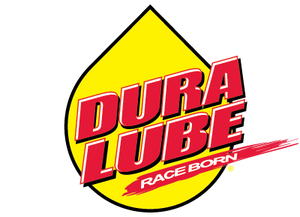TEST RESULTS

Below are the results of an independent ASTM test conducted by a third-party laboratory for Dura Lube® Engine Treatment.
ASTM tests provide standardized, repeatable, and industry-accepted methods for evaluating the performance, quality, and safety of engine treatments, lubricants, and fuel additives. These tests ensure that products meet regulatory requirements, industry standards, and OEM (Original Equipment Manufacturer) specifications.

ASTM D4172-94
Wear Protection: Dura Lube® Engine Treatment (0.52mm wear scar) provides a 41.4% increase in wear protection compared to Lucas Heavy Duty Oil Stabilizer™ (0.87mm wear scar).
Wear Protection: A smaller scar means better metal protection
Importance of ASTM D4172-94 for Engine Treatments:
- Reduces Wear & Extends Engine Life
- Verifies Anti-Wear Additive Performance
- Prevents Engine Component Failure
- Supports Fuel Economy & Efficiency
- Helps Compare Engine Treatments & Oil Additives
ASTM D2783
Extreme Pressure: Dura Lube® Engine Treatment (41.85 pounds) provides a 191% increase in boundary film strength compared to STP® Multipurpose Motor Treatment™ (14.4 pounds).
Extreme Pressure: Improved boundary lubrication
Importance of ASTM D2783 for Engine Treatments:
- Prevents Metal Wear & Component Failure
- Measures Load-Carrying Capacity
- Validates Additive Performance
- Improves Lubricant Selection for High-Stress Applications
- Prevents Scuffing & Pitting in Gears and Bearings
ASTM D2272
Oxidation: Dura Lube® Engine Treatment (161 avg. minutes) provides a 133% increase in oxidation stability compared to zMax® Engine Formula™ (69 avg. minutes).
Oxidation: Stronger remaining in-service fluid life
Importance of ASTM D2272 for Engine Treatments:
- Helps determine if engine oil additives improve oxidation resistance.
- Indicates how well an oil treatment prevents sludge, varnish, and deposit formation in high-temperature conditions.
- Used in quality control and certification for high-performance lubricants.
- Helps predict oil drain intervals for industrial and automotive applications.
